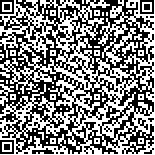| 摘要: |
| 选择成都市6个养老院庭园的冬
季微气候作为研究对象,讨论庭园冬季微
气候现状及其对老人健康的影响,并结合
老人的活动倾向为养老院庭园的微气候
营造提供依据。结果显示:庭园冬季平均
温度为1 2 .1℃,高于外界温度,增温均值
为2 .9 4℃±1. 61℃。庭园冬季湿度较为舒
适(50.3% ~ 60.5%),与外界相比降湿率为
9.0 4%±11.5%。庭园能不同程度地削弱太
阳辐射,13点和15点时庭园内的太阳辐射
最强,建议老人应在冬季的13:0 0—15:0 0
点开展庭园活动。庭园的平均叶面积指数
(LAI)为1.25±0.26,能对冬季微气候参数
产生强烈的影响。庭园各功能分区并未考虑
到老年人对区域微气候的不同需求。因此,
庭园绿化可在不改变LAI值的基础上,选用
落叶乔木、常绿灌木及地被替换现有常绿
乔木,以增加冬季采光,降低湿度,提升庭
园冬季温度,调节各功能分区的微气候。 |
| 关键词: 养老院 庭园 微气候 舒适度 叶面积指数 |
| DOI:10.13791/j.cnki.hsfwest.20190412 |
| 分类号: |
| 基金项目:国家自然科学基金项目(51308464);四川
省教育厅社科规划和委托项目
(JGYQ201416) |
|
| Research on the Winter Microclimate of the Garden in the Nursing Homes and Its Impact on theHealth of the Elderly |
|
LIU Ying,ZONG Hua
|
| Abstract: |
| With the acceleration of China’s aging process and the improvement of the
infrastructure of nursing homes, the construction of nursing home gardens has received
attention. Moreover, the urban climate has gradually deteriorated, posing a great threat
to the health of the elderly. Therefore, the winter microclimate (air temperature, relative
humidity and light intensity) of the six nursing homes in the downtown area of Chengdu
were selected as the research object. The paper discussed the current situation of winter
microclimate in the garden and its impact on the health of the elderly, and provided a
basis for the microclimate construction of the nursing home gardens in combination with
the leaf area index of the garden and the activity rules of the elderly in the garden. The
results showed that the average temperature of the nursing home garden in winter was
12.1℃, which was higher than the external temperature, but it was still a cold environment;
The highest temperature in the garden was from 13:00 to 17:00, and it was recommended
that the elderly adjust the time of the garden activities; The garden had a certain warming
effect, and the average temperature increase was 2.94℃±1.61℃. The humidity in the
garden was relatively comfortable in winter (50.3%-60.5%). Compared with the outside
world, the humidity reduction rate was 9.04%±11.5%, and the higher the air humidity in the
garden, the more obvious the dehumidification effect.The garden had the most significant
dehumidification effect from 9:00 to 11:00, and the afternoon effect was weakened overall.
The garden could weaken the light intensity to varying degrees, and the stronger the light
intensity, the stronger the weakening effect; at 13:00 and 15:00, the light intensity in the
garden was the strongest. It was recommended that the elderly should carry out the garden
activities from 13:00 to 15:00 in the winter. The average leaf area index (LAI) of the garden
was 1.25 ± 0.26. Although the value was small, it could also have a strong influence on the
winter microclimate parameters. The functional subdivisions of the garden did not take into
account the different needs of the elderly for the regional microclimate, nor did they adjust
and organize the appropriate garden space on the basis of natural climate characteristics.
It was statistically found that the elderly in winter tend to do rest and walking activities in
the rest area, the street tree area and the atrium area, but the light intensity in this area was
weakened more, and the temperature was lower due to more evergreen trees. Therefore, it
was recommended to replace some of the evergreen trees in the existing garden with native
deciduous trees such as eucalyptus, hedgehog, thorn, sea otter, ginkgo, etc., to obtain more
winter lighting and enhance the temperature of the garden. On the basis of not changing the LAI value, the evergreen trees and ground cover should be used to replace some of the evergreen trees to maintain the wetting effect
of the garden in winter. On the basis of achieving multi-level, diversity, diversification and balance of the landscape of the garden green
space, it will create a suitable micro-climate for the garden and enhance the comfort of outdoor activities for the elderly. |
| Key words: Nursing Homes Garden Microclimate Comfort Leaf Area Index |


